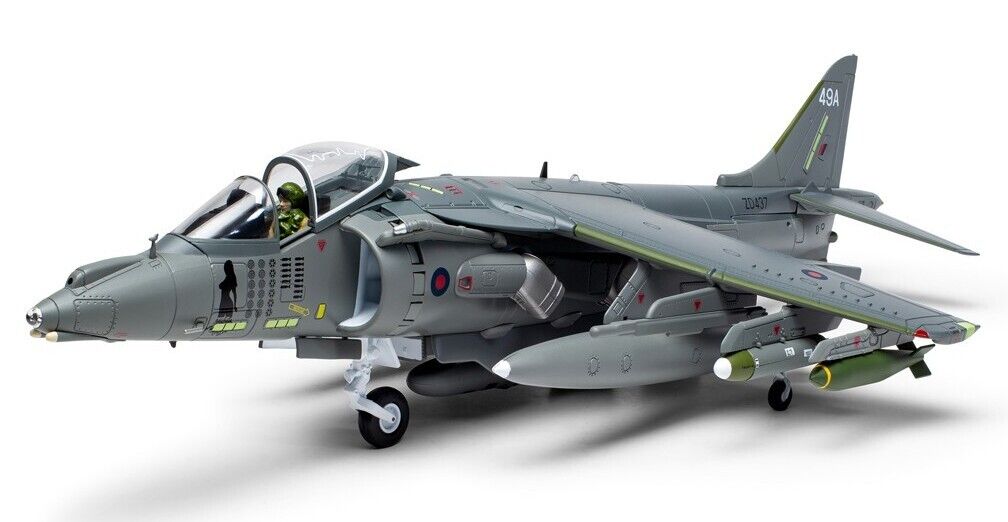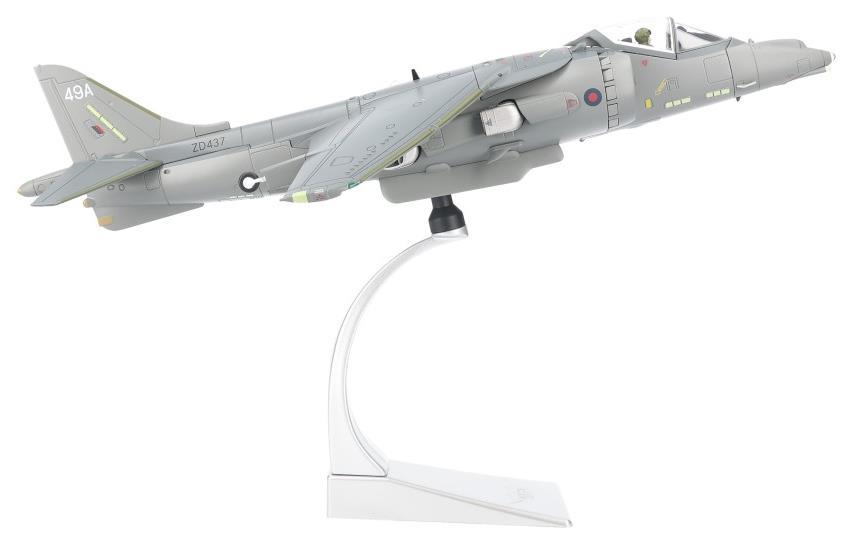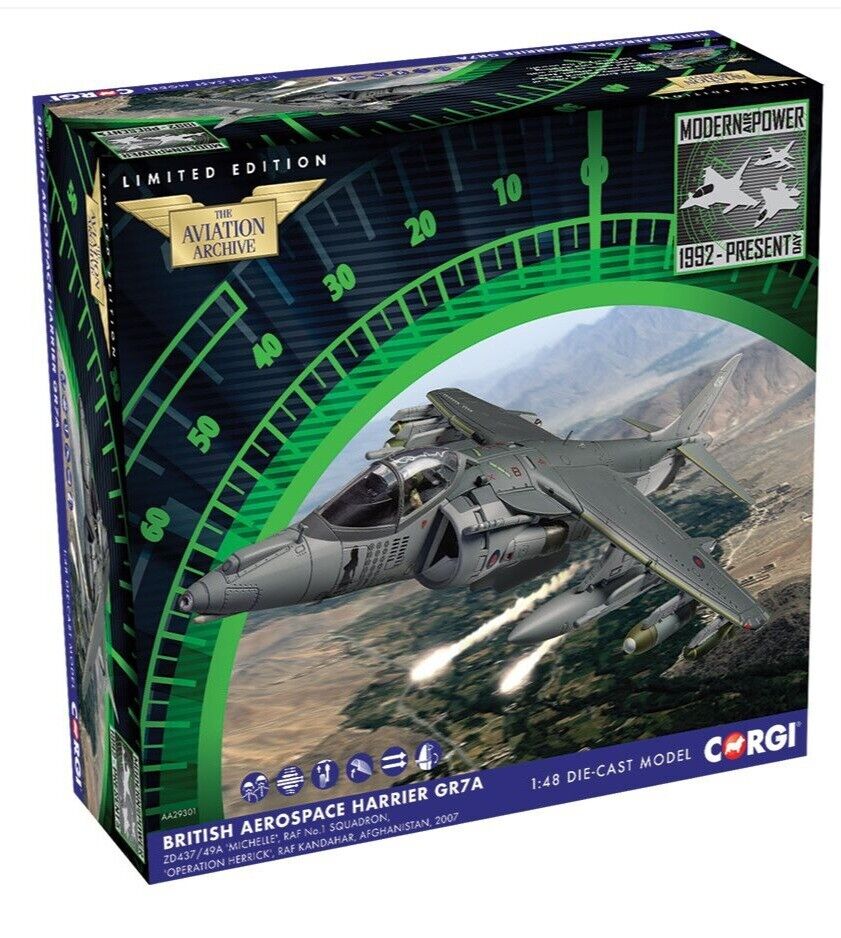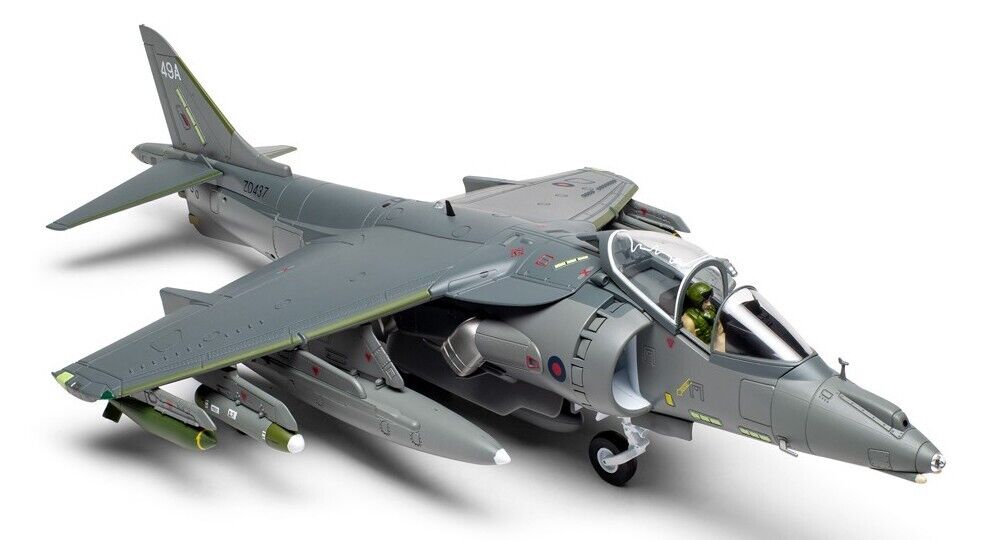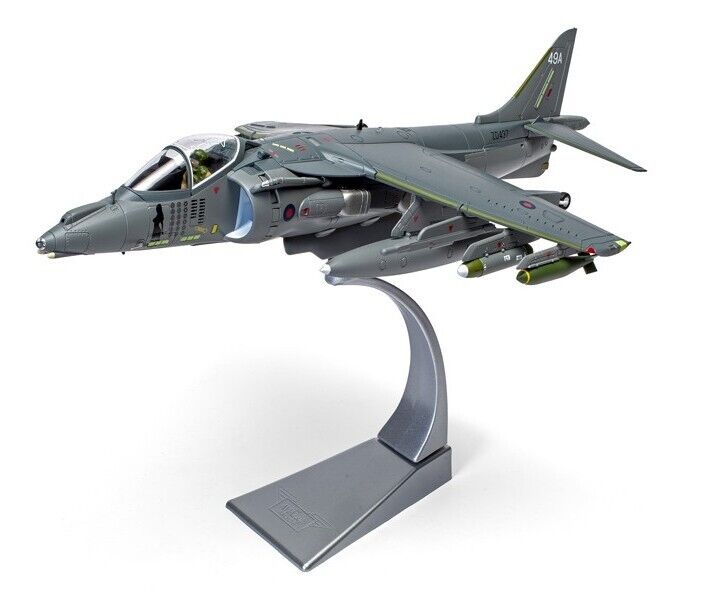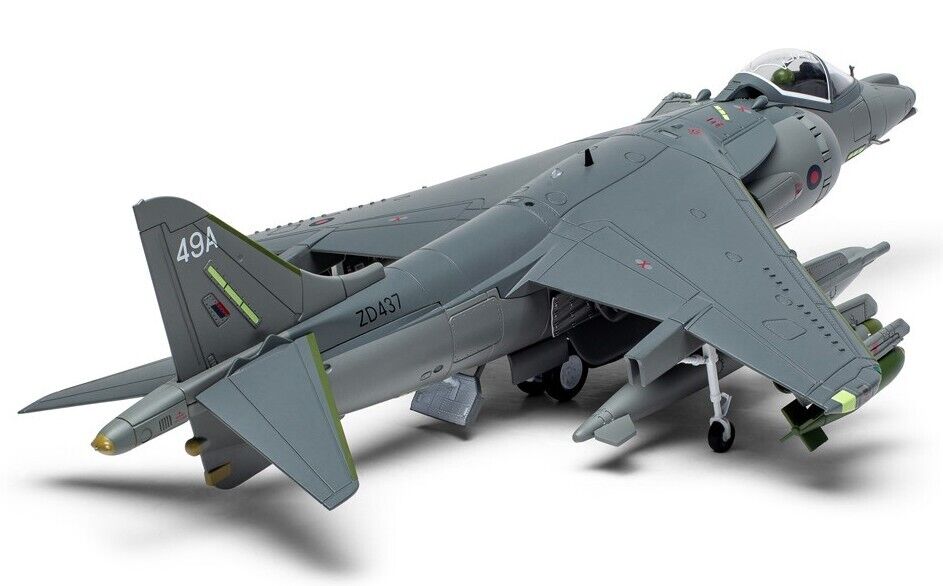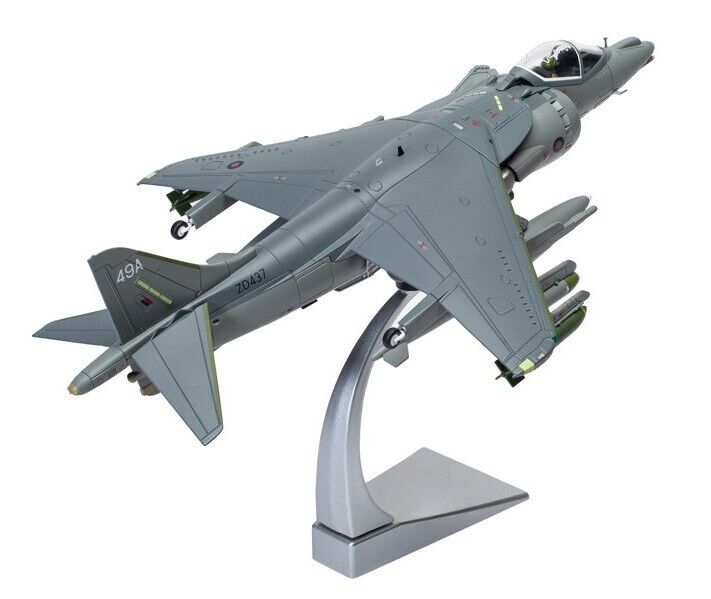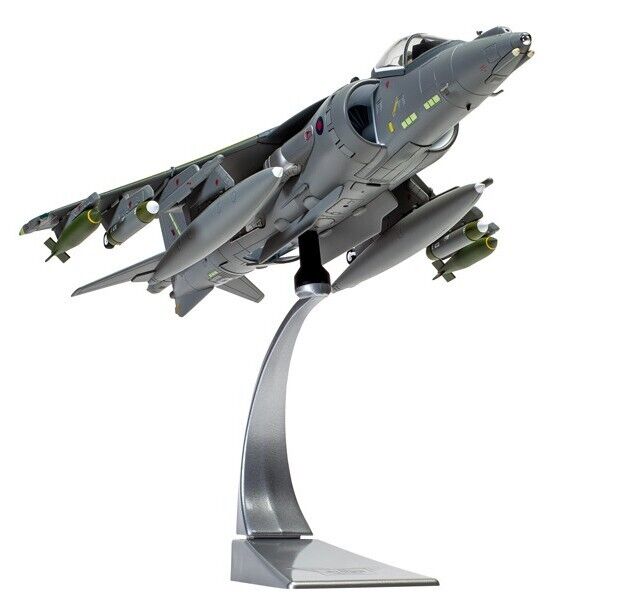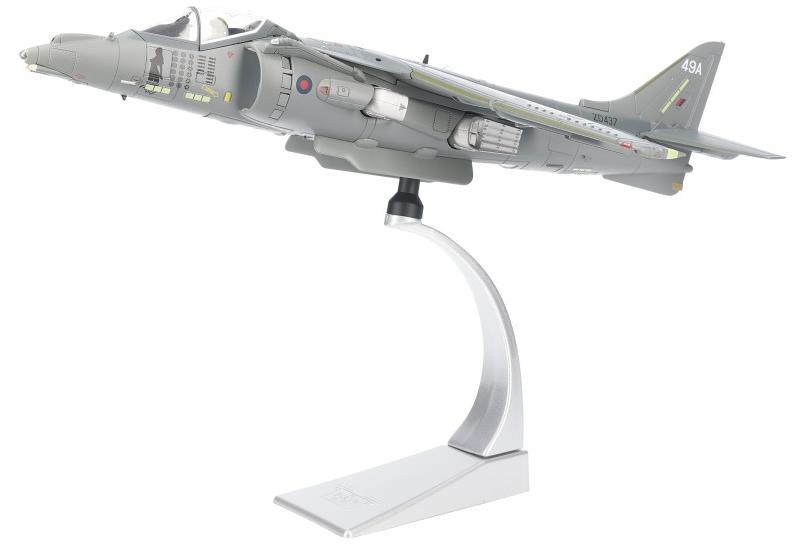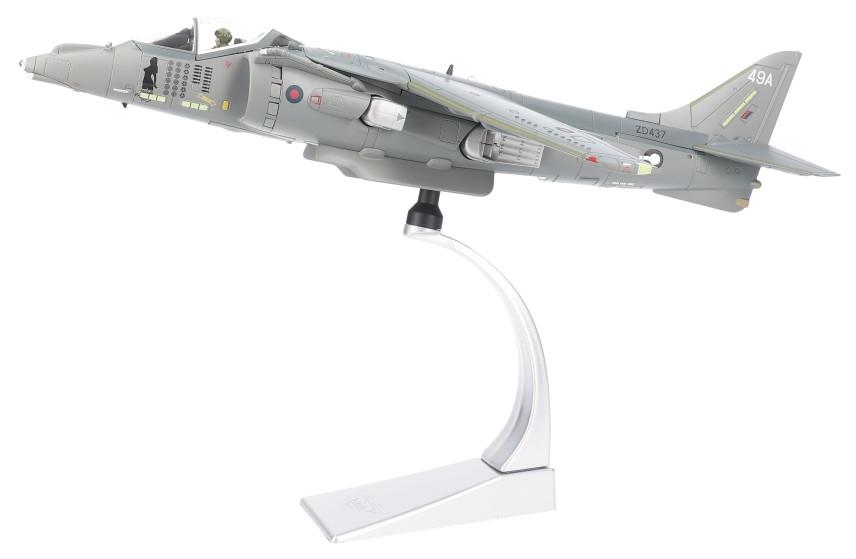BAe Harrier GR.Mk 7 – Michelle, 1 Sqn, RAF, Kandahar, Afghanistan, Operation Herrick, 2007 1/48
Add to compare1 in stock
£139.99 £149.99
1 in stock
Corgi Aviation Archive 1/48 scale AA29301: BAe Harrier GR.Mk 7 ZD437 Michelle of 1 Sqn, RAF, Kandahar, Afghanistan, Operation Herrick, 2007. Limited Edition of 1,100 models.
Length 11.5 inches Wingspan 7.5 inches
“Operation Herrick” was the British name for their participation in the NATO International Security Assistance Force (ISAF) that took place in Afghanistan from 2002 to 2014 with Harriers joining the operation in 2004 until 2010. The Harriers from the RAF and the RN Fleet Air Arm combined to form Joint Force Harrier (JFH) and flew in pairs in support of British ground forces as well as other NATO troops. Harrier GR7A ZD404 was named Lucy and ZD437 was named Michelle after a morale boosting visit from The Sun tabloid Page 3 models Lucy Pinder and Michelle Marsh.
Providing air cover, ground close air support and air strikes against enemy insurgents, the first detachment of six RAF Harriers arrived at Kandahar Airfield in 2004, with aircraft remaining in theatre until Harriers were relieved by RAF Tornados in 2009. Flying a punishing schedule of these vital missions in support of ground operations, Harriers from 1, 3 and 4 Squadrons would rotate through Kandahar during that time, augmented by 800 Naval Air Squadron from September 2006 until January 2007.
During one of the busy periods of operational flying from Kandahar, a morale boosting visit was arranged for British troops to meet two rather high profile celebrities between hectic flying commitments. Page three pin up girls Michelle Marsh and Lucy Pinder travelled to Afghanistan to show their support for the troops and in preparation for their visit, ground crews made two rather unique artistic additions to two of their Harriers. Harrier ZD437 had a silhouette of Michelle Marsh applied to her nose at the head of her impressive mission marking scoreboard and was also given the name ‘Michelle’. The other aircraft, Harrier ZD404, benefitted for a similar application, but this time carrying a representation of Lucy Pinder on its nose and appropriately given the name ‘Lucy’.
The two celebrities appeared to be rather taken with this unique tribute and several photographs of them posing with their respective Harriers were taken and used for publicity purposes. Unfortunately, RAF officials were less enthusiastic about this development and quickly ordered the artwork to be removed, meaning that these Harriers would only carry their rather notorious artwork for a relatively short period. During Operation Herrick, the vast majority of British aircraft committed to the mission were based and operated from RAF Kandahar.
BAe Harrier GR7 ZD437 made its first flight on 3rd November 1989 and was delivered to the RAF later that same month. She was one of the aircraft still based at Cottesmore on the occasion of the Harrier’s final flight operation in British service on 15th December 2010, although she had long since shed her famous page three nose artwork by then.
Designed to meet a NATO specification for a light tactical support fighter that was also capable of Vertical/Short Take off and Landing (V/STOL), the Harrier first flew in 1960. This unique aircraft has the distinction of being the only successful V/STOL design out of the many that were put forth during the 1960s. There are four different versions of the Harrier, which uses thrust vectoring to achieve V/STOL: the first generation Hawker Siddeley Harrier, the Naval strike/air defence BAE Sea Harrier, the US AV-8B Harrier II variant and the British BAE Harrier II. The Harrier was produced between 1969 and 2003.
Marking a significant development in the history of this magnificent aircraft, the Harrier II may have shared many visual similarities with its famous VSTOL predecessor, however, was actually a very different aeroplane altogether, one which owed much to the American McDonnell Douglas Corporation. Essentially, this new generation of Harrier was a completely different aircraft, a much more capable aeroplane in every respect and a space age development of this now familiar VSTOL Harrier theme. This programme would eventually result in the introduction of the much more capable British Harrier GR.5 in 1987 and further successive upgrades over the next couple of decades which would maintain the Harrier’s position as one of the world’s foremost strike/attack aircraft and one which possessed such unique attributes that it was described by many as being the most valuable fixed wing aviation asset available to any air arm in the world.
With increased range, power and weapons carrying capability, this new generation of Harrier was intended to strike hard and fast, often at the outset of any military contact engagement, before returning once refuelled and rearmed to support infantry units in their endeavours. Always on station and always in the thick of the action, is it any wonder why military personnel held the Harrier in the same affection in which the public always have. This upgrade development only served to enhance the legacy of the Harrier, with this later generation of aircraft regarded as arguably the most flexible aviation asset available to any air force in times of conflict and the one most likely to be deployed first.
Without doubt, the attribute which made the Harrier famous and cemented its place in the hearts of aviation enthusiasts all over the world was its ability to take off and land vertically, a capability which gave the aircraft incredible versatility and making it something akin to a helicopter, but with the speed and striking power of a fixed wing jet. In truth, performing a vertical take-off in an operational situation was something which rarely happened, as this would use too much fuel, place a strain on the engine and not allow the aircraft to operate with anything like an effective weapons load. A rolling take-off would still see the Harrier taking to the air in a much shorter distance than traditional strike aircraft, but would also allow it to carry a much more effective weapons load and additional fuel.
At its heart, the Harrier was a mud mover, an aircraft ground forces could rely on to help them dislodge enemy strongholds or particularly stubborn areas of resistance, undoubtedly saving the lives of countless troops in the process. As the Harrier II continued to be developed, this famous aircraft would become ever more effective, be that whilst operating from a land base, or from the deck of an appropriate ship – the Harrier didn’t even need a large aircraft carrier from which to conduct offensive operations. As one of the most capable aviation assets in RAF service, Harriers were never too far from the world’s conflict hotspots, such as Operation ‘Herrick’, Britain’s commitment to supporting British and NATO personnel on operations in Afghanistan.
The airworthy Harriers were withdrawn from British service in 2010 and in a move which infuriated a great many people at the time, the remaining UK Harrier fleet of around 74 airframes, plus all available spares and associated equipment, were sold as a single lot to America in 2011. They needed the aircraft in order to maintain their own fleet of US Marine Corps Harriers flying, aircraft which they intended to keep in service for many years to come.
With many of the British aircraft only recently having undergone upgrade and re-fit at significant expense to the treasury, the Americans were getting something of an aviation bargain. One knowledgeable aviation commentator at the time described how the US were ruthlessly taking advantage of this unexpected situation, benefiting from all the money the Brits had only recently spent on extending the service life of their Harriers. ‘It’s like they are buying a car with only 15,000 miles on the clock at a knock-down price’ and with that cost being a staggeringly modest £110 Million, this was certainly a shrewd piece of international aviation business.
| Weight | 3.1 kg |
|---|

